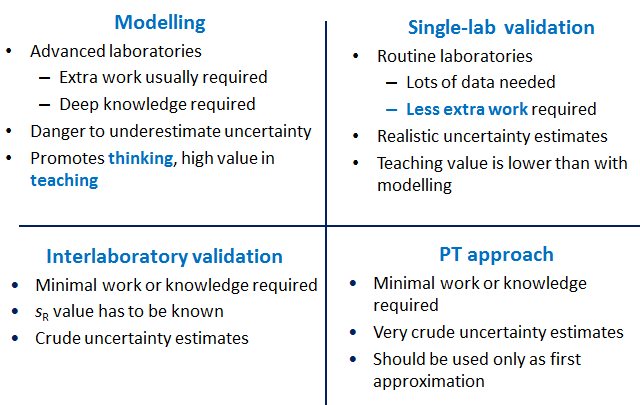Brief summary: This section summarized the main properties of the uncertainty estimation approaches, their advantages and drawbacks.
Whenever possible, one of the so-called single-lab approaches should be used. The interlaboratory approaches are only suitable for getting very crude uncertainty estimates. We recommend using them only in case when the laboratory actually does not have the measurement in place yet and wants to know, approximately what uncertainty can be obtained.
If the laboratory has competence and time to carry out investigations of the analytical procedures the the modeling approach is often suitable. If the laboratory has limited time, but has validation and quality control data then the single-lab validation approach is the most suitable.
Comparison of measurement uncertainty estimation approaches
http://www.uttv.ee/naita?id=17917
https://www.youtube.com/watch?v=TlpJ1c-9Rx8
Table 11.1 summarizes the pros and cons of the approaches. See also Table 8.1 in section 8 for some key differences.
Table 11.1. Comparison of the measurement uncertainty estimation approaches.



